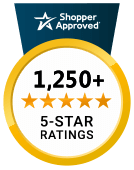The Challenges Of Prescription Pricing For Seniors In The U.S.
Medicare is a great health insurance option for eligible retirees. However, working in the healthcare insurance industry, one issue I’ve seen not being talked about properly is the out-of-pocket costs for cancer treatment. No matter which option a retiree takes while on Medicare, there are costs the retiree will be responsible for that could be avoided if they fully understood all of their options.
Cancer is still the second most common cause of death in the United States. According to the American Cancer Society (ACS), men have a 39.3% lifetime chance of being diagnosed with cancer and women a 37.7% chance. That means more than one in three people will be diagnosed with some form of these diseases in their lifetime. Where the statistic becomes even more important for retirees is that about 77% of all cancers are diagnosed in people 55 or older, and the median age for cancer diagnosis is 66.
The good news is that according to the ACS, there has been a significant decrease in cancer deaths in the past 25 years due to the drop in smoking and better early detection and treatment. Many lifesaving treatment options are available; however, they can come at significant cost to a retiree living on a fixed income.
Retirees eligible for Medicare typically have two options for their health insurance. Below I explain both options to illustrate what some out-of-pocket costs could look like for those undergoing chemotherapy and/or taking high-cost oral cancer maintenance medications.
The first option is to keep Medicare as their primary insurance. This comes with nationwide coverage and doesn’t require doctor referrals. The big downside to Medicare is it only covers 80% of medical expenses. If a retiree chooses this route, they could then purchase a separate Medigap supplement to help cover the other 20% of medical expenses. Many are led to believe that if they do this, they will be covered at 100% for cancer treatments. That is not always true. Yes, Medicare with a Medigap supplement does a great job of covering the direct costs of things like chemotherapy and infusions, but there are indirect costs that are rarely mentioned.
The second option a retiree has is to choose to privatize their insurance with an alternative known as Medicare Advantage. These plans are not supplements, but rather are sold as all-in-one plans that cover hospital, medical and usually prescription coverage with little to no monthly premium. These can be a good option for limiting out-of-pocket costs for retirees in certain situations, such as those who can’t afford a supplement. Another benefit to a Medicare Advantage plan is all plans must limit out-of-pocket costs for Medicare Parts A and B covered expenses to $6,700 for in network or $10,000 for in and out of network combined. What is often not explained properly, though, is that with most of these plans, the retiree is responsible for 20% of chemotherapy and other Part B drugs up to the plan limit, according to Medicare.
There are three categories of indirect costs relating to either health insurance option that retirees should be aware of. The first indirect costs come from high-cost oral maintenance drugs, which are commonly taken when someone is treated for cancer. These drugs fall under Part D, which has no maximum out of pocket. Most of the time, a patient will be prescribed one to three “anti-nausea” medications, which can cost several hundred dollars out of pocket. A 2019 analysis by the Kaiser Family Foundation shows the high out-of-pocket expenses for Part D enrollees taking specialty drugs for cancer treatment. The study showed that 14 of the 15 specialty drugs for cancer treatment each had a median out-of-pocket annual cost of over $8,000. Of those 14, median annual costs ranged from $8,181 for a prostate cancer drug to $16,551 for a specific leukemia drug.
The second category of indirect costs includes experimental treatment options a retiree might want to pursue that are not covered. And the last category involves expenses like travel, lodging and meals that would be the individual’s responsibility even if they sought treatment regionally.
There is an option to help pay for such unforeseen expenses that, in my experience, most retirees do not know is available to them: cancer insurance. According to the Washington Post, most retirees who had either Medicare with a Medigap supplement or an alternative Medicare Advantage plan were responsible for almost $6,000 of direct or indirect costs due to a diagnosis of cancer. From my experience running scenarios, for a retiree to obtain a $10,000 lump sum cancer insurance benefit that pays tax-free upon diagnosis of cancer, it would cost on average about $1 per day. Retirees can use this sum as they see fit for their specific needs.
The downside to this insurance is it is not available to someone who has been diagnosed with or treated for cancer in the past five years or who outlives the monthly premiums in relation to the benefit amount. And obviously, not everyone who buys this insurance will get diagnosed with cancer in their lifetime.
Having a family history of cancer, I decided at the age of 42 to purchase a cancer benefit through my company on myself and my family. Knowing the statistic that men have a 39.3% chance of being diagnosed with cancer in their lifetime and that I would outlive my chosen benefit amount at almost 105 years old made this the right decision for me and my family to help with potential unforeseen costs.
Every person is different, though, so retirees should consider what’s best for themselves based on their own needs and situations. But although everyone’s needs are different, understanding the direct and indirect costs related to cancer will help retirees better plan for their retirement needs.






